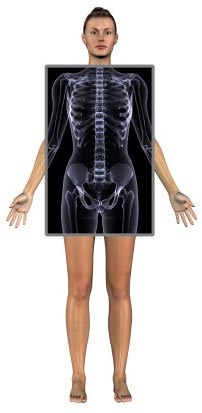
There’s more to bone than just hard minerals like calcium. “Soft” components like collagen and collagen-bound water comprise more than half of bone’s content and are important for bone strength. X-ray based diagnostic tests (like CT and DXA – or “DEXA” – scans), which are used to assess bone strength and density, are sensitive only to the mineral portion of bone; the soft components are essentially invisible.
Mark Does, Jeffry Nyman and colleagues investigated the utility of nuclear magnetic resonance (NMR) signals – the basis for MRI scans – for assessing the mechanical properties of bone samples from cadavers. They found that NMR signals were better predictors of several measures of bone strength than X-ray derived signals like DXA.
Although standard clinical MRI scanners do not detect the exact NMR signals used in this study, the results, reported Jan. 21 in PLoS ONE, suggest that if these measures are implemented on clinical scanners, MRI scans could provide a more complete assessment of fracture risk than X-ray based tests.